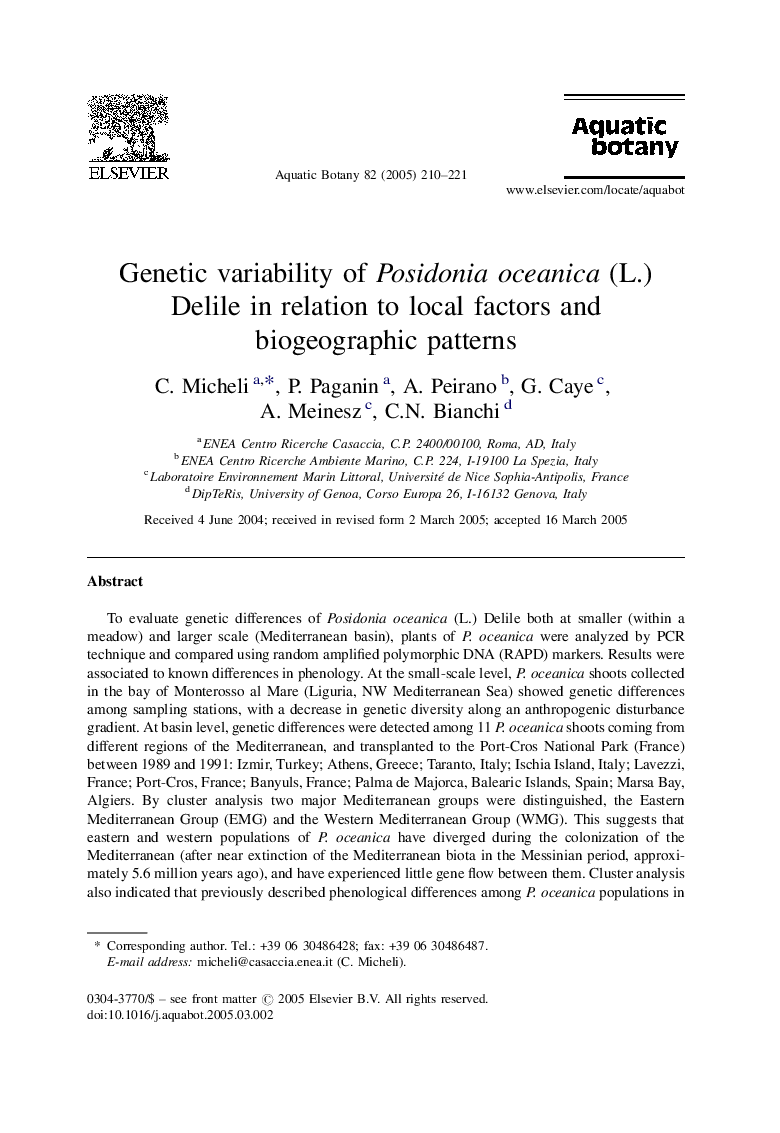| Article ID | Journal | Published Year | Pages | File Type |
|---|---|---|---|---|
| 9477604 | Aquatic Botany | 2005 | 12 Pages |
Abstract
To evaluate genetic differences of Posidonia oceanica (L.) Delile both at smaller (within a meadow) and larger scale (Mediterranean basin), plants of P. oceanica were analyzed by PCR technique and compared using random amplified polymorphic DNA (RAPD) markers. Results were associated to known differences in phenology. At the small-scale level, P. oceanica shoots collected in the bay of Monterosso al Mare (Liguria, NW Mediterranean Sea) showed genetic differences among sampling stations, with a decrease in genetic diversity along an anthropogenic disturbance gradient. At basin level, genetic differences were detected among 11 P. oceanica shoots coming from different regions of the Mediterranean, and transplanted to the Port-Cros National Park (France) between 1989 and 1991: Izmir, Turkey; Athens, Greece; Taranto, Italy; Ischia Island, Italy; Lavezzi, France; Port-Cros, France; Banyuls, France; Palma de Majorca, Balearic Islands, Spain; Marsa Bay, Algiers. By cluster analysis two major Mediterranean groups were distinguished, the Eastern Mediterranean Group (EMG) and the Western Mediterranean Group (WMG). This suggests that eastern and western populations of P. oceanica have diverged during the colonization of the Mediterranean (after near extinction of the Mediterranean biota in the Messinian period, approximately 5.6 million years ago), and have experienced little gene flow between them. Cluster analysis also indicated that previously described phenological differences among P. oceanica populations in different sectors of the Mediterranean are not mere phenotypic responses to different climatic and hydrological conditions but may well have a genetic basis.
Related Topics
Life Sciences
Agricultural and Biological Sciences
Aquatic Science
Authors
C. Micheli, P. Paganin, A. Peirano, G. Caye, A. Meinesz, C.N. Bianchi,
